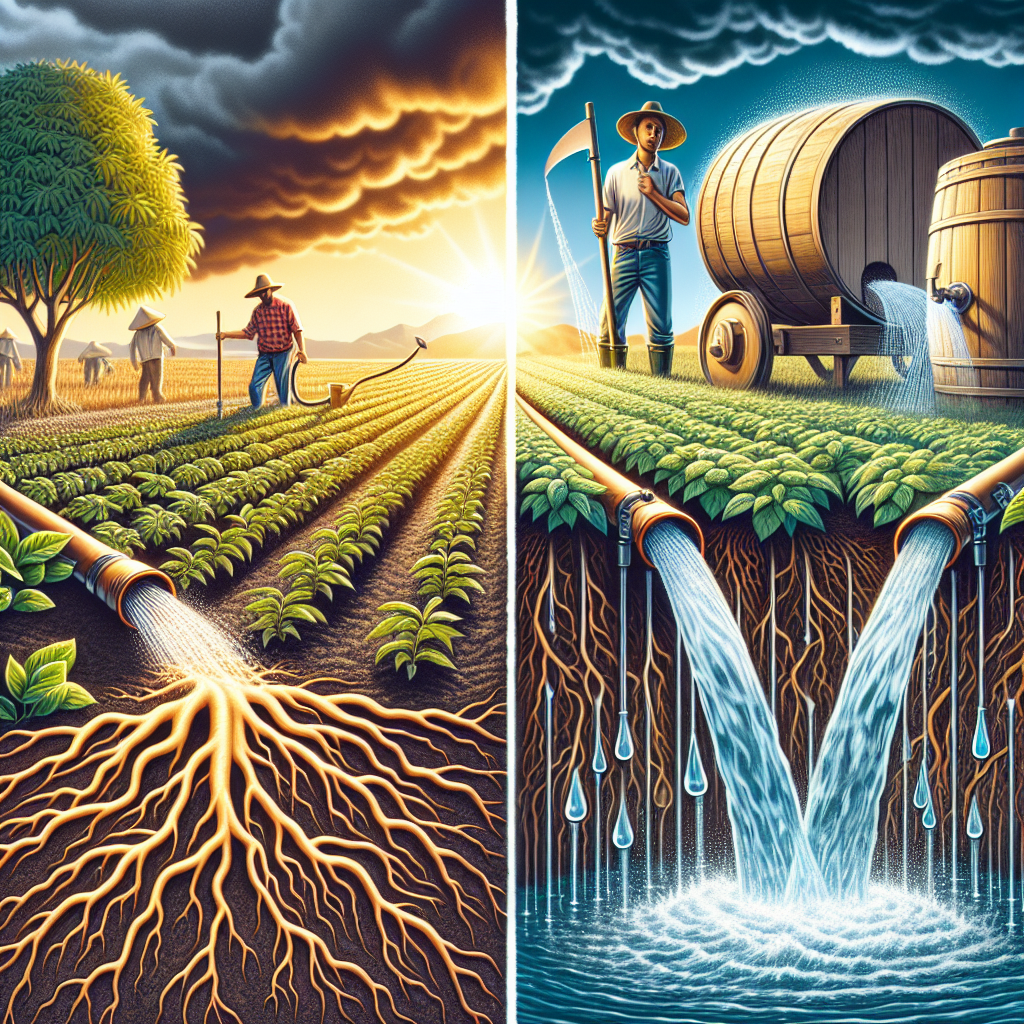Water conservation is becoming an increasingly important issue in today’s world, as water scarcity becomes a pressing concern in many regions. One of the main contributors to water waste is inefficient irrigation systems used in agriculture. Traditional flood irrigation methods often lead to excessive water usage and runoff, resulting in a significant waste of this precious resource. In recent years, slow drip irrigation has emerged as a more sustainable alternative, with the potential to greatly impact water conservation efforts.
Slow drip irrigation is a method that delivers water directly to the roots of plants through a system of pipes and tubing. This allows for a controlled release of water, ensuring that plants receive just the right amount they need without any excess. By providing water only where it is needed, slow drip irrigation minimizes wastage and helps conserve water resources. This method has been shown to be up to 50% more efficient than traditional flood irrigation techniques.
The impact of slow drip irrigation on water conservation is significant for several reasons. Firstly, by reducing the amount of water wasted through runoff and evaporation, this method helps to conserve precious water resources. In regions facing water scarcity or drought conditions, such savings can be crucial for ensuring a stable and sustainable water supply for agriculture and other uses.
Moreover, slow drip irrigation also helps to improve soil health and fertility. By delivering water directly to the root zone, this method promotes better root development and nutrient uptake by plants. This results in healthier crops with higher yields, while also reducing the need for fertilizers and other chemicals that can pollute water sources.
In addition to these environmental benefits, slow drip irrigation also offers economic advantages for farmers. While initial investment costs may be higher compared to traditional irrigation systems, the long-term savings on water usage and crop productivity can outweigh these expenses. Farmers using slow drip systems have reported increased yields, reduced labor costs, and improved crop quality.
Furthermore, slow drip irrigation can also help mitigate the effects of climate change on agriculture. With changing weather patterns leading to more frequent droughts and unpredictable rainfall, having a reliable and efficient irrigation system is crucial for ensuring food security and economic stability. Slow drip technology offers a flexible solution that can adapt to varying climate conditions while conserving valuable water resources.
Despite its numerous benefits, slow drip irrigation still faces some challenges that limit its widespread adoption. One common concern is the potential for clogging in the tubing or emitters used in these systems. To address this issue, regular maintenance and filtration systems are necessary to prevent blockages and ensure proper functioning.
Another challenge is the lack of awareness among farmers about the advantages of slow drip irrigation compared to traditional methods. Many farmers may be reluctant to switch due to concerns about cost or unfamiliarity with the technology. Therefore, education initiatives and government support programs are essential for promoting the adoption of this sustainable practice.
In conclusion, slow drip irrigation has the potential to revolutionize agricultural practices by significantly reducing water waste while improving crop productivity and soil health. Its impact on water conservation cannot be overstated in today’s world where sustainability is paramount for ensuring food security and environmental protection.
As we face increasing challenges from climate change and growing populations putting pressure on limited natural resources like fresh water supplies; adopting innovative technologies like slow-drip irrigation will play a crucial role in preserving these vital resources for future generations.
By investing in sustainable practices like slow-drip irrigation today; we can ensure a more resilient agricultural sector tomorrow that is both economically viable; environmentally friendly; thereby safeguarding our food supply chains while mitigating the impacts of climate change at once – truly a win-win situation!













